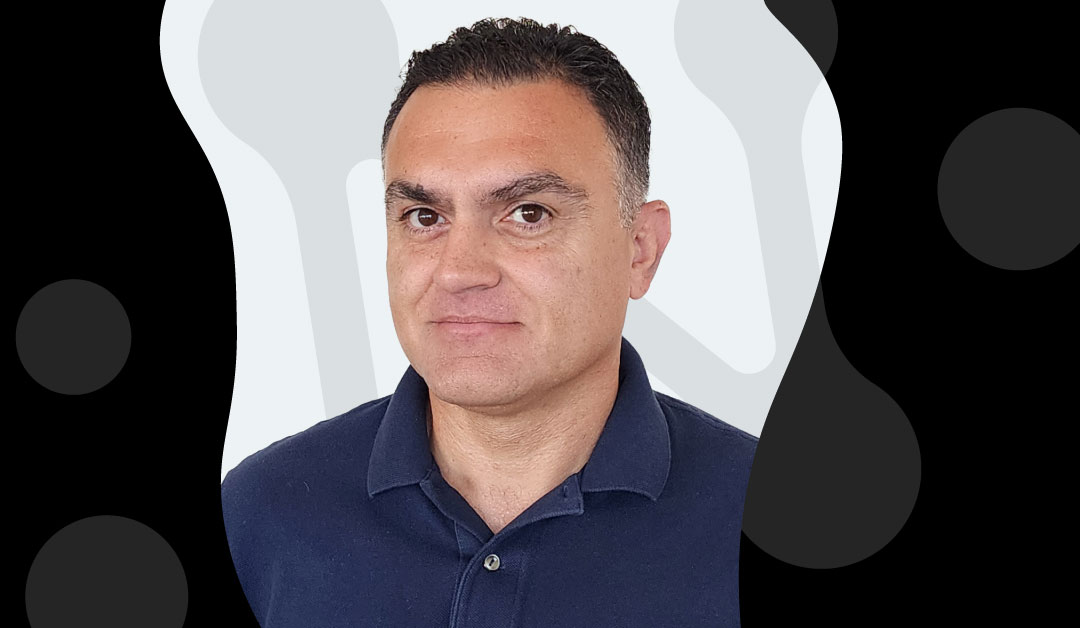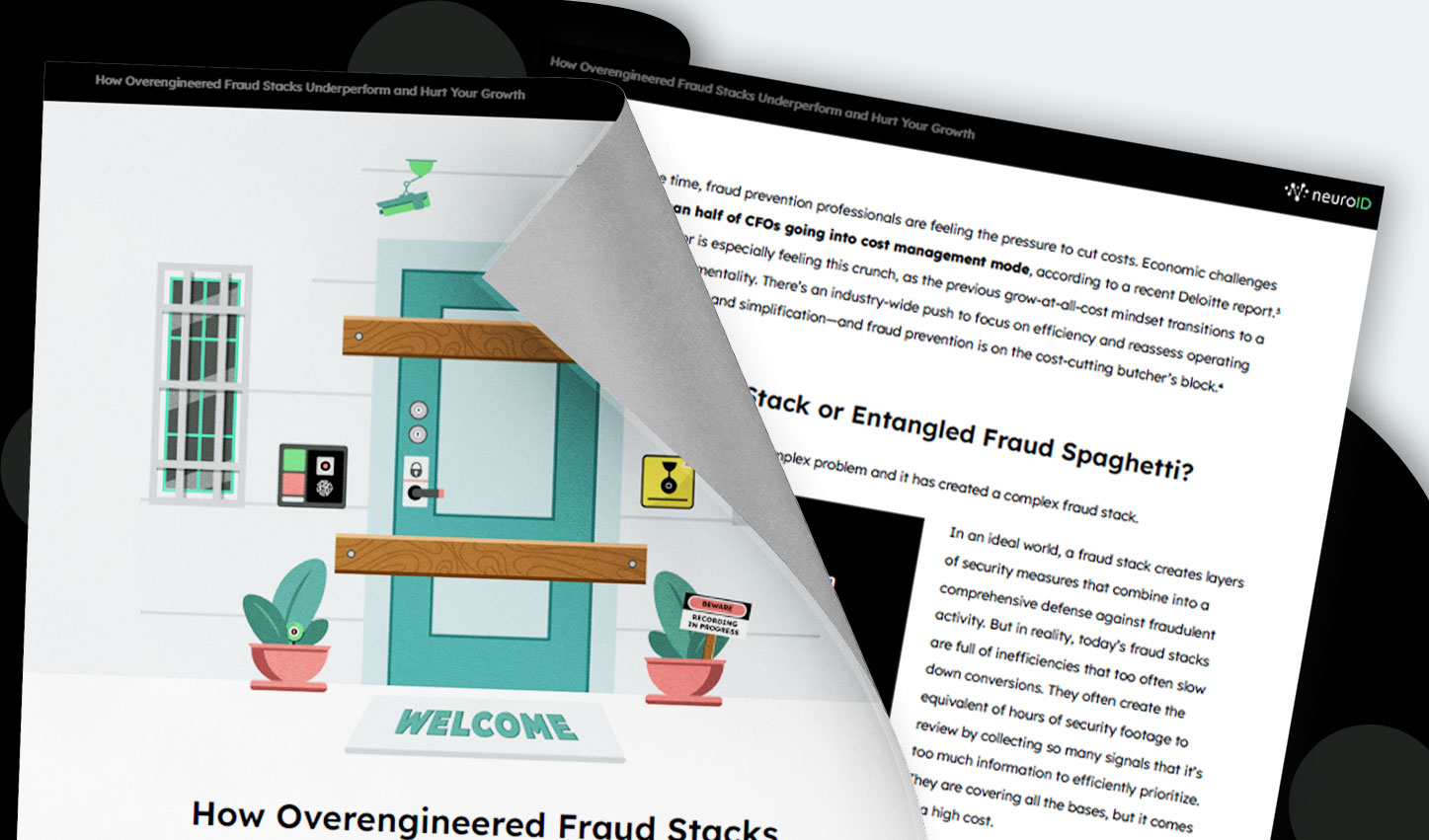
5 Questions for Nash Ali: NeuroID’s New Powerhouse Head of Operational Strategy
We’re thrilled to welcome Nash Ali to the NeuroID team! His impressive career spans both risk and fraud detection at some of the largest FIs and solution development at some of the most innovative fraud system providers. Here’s what Nash has to say about today’s biggest fraud challenges and opportunities, and how NeuroID fits in the mix.
Q1: Your career path has specialized in working through risk strategies, data science, and operations teams in the fintech and fraud prevention space. What first attracted you to the fraud world?
Nash: I stumbled into it as a career path, honestly. I started as an engineer for Sun Microsystems, helping build and test supercomputers, then realized it wasn’t my passion. While pursuing an MBA from Berkeley, I attended a fascinating seminar on fraud risk management, which eventually led me to Bank of America on the fraud risk management team for credit and debit cards. I thoroughly enjoyed the work and so for the last 20 years now, I’ve been squarely in the world of fraud risk management in the digital world.
And while it may put most people to sleep, this work invigorates me. Over the years I’ve built fraud risk management architecture for a number of financial institutions, banks, fintechs, and ecommerce companies. I specialize in some of the newer technologies with respect to orchestration and how it fits into the identity architecture.
Q2. What challenges do you see facing our industry in the coming years?
There are two major themes emerging in the digital players and money movement realm.
First, there are the advancements in AI and both the challenges and opportunities being created. We fraud risk managers have been seeing a huge adoption of the technology on the fraud side. As we know, fraudsters can be very sophisticated and advanced, and AI’s adoption in committing fraud has been incredibly swift, often outpacing its adoption for legitimate uses. For instance, there’s a variant of chatGPT, known as “fraudGPT,” that has become prevalent in the fraud world. The recent AI advancements have even managed to outsmart physical biometrics, such as facial and voice recognition. Some of the industry’s long standing fraud mitigation techniques based on biometrics are no longer as effective as they used to be.
We’re on the cusp of seeing even more advanced fraud tactics powered by AI. It’s ushering us into a brave new world of AI-to-AI combat, where fraud mitigation will have to leverage AI to counter AI-driven fraud techniques. I’m currently pioneering some efforts in this domain, and I believe we’ll see significant strides in AI-powered fraud detection and management soon.
The second prominent trend is the continuing shift towards real-time money movement via bank accounts. In the U.S., we’ve mostly used non-real-time payment models like ACH when paying from your bank account. But Europe has adopted real-time money movement systems like open banking. With the recent introduction of FedNow and the roles of ClearingHouse’s RTP for real-time bank transactions, the U.S. is rapidly adapting. Visa—with Visa Direct and MasterCard’s Send—is already highlighting the increasing examples of real-time authorization and settlement networks.
These real-time transactions carry inherent risks. They’re magnets for fraud due to their instant and irreversible nature, especially for scripting attacks. As real-time payment methods gain popularity, the challenge is combatting fraud in this immediate environment. The pressure at the top of the risk funnel for these financial models is significant. Technologies to counter real-time fraud are crucial, and NeuroID holds a pivotal position in this arena. We’re going to see much use of real-time payment methods and the associated fraud schemes, and how real-time risk assessment can help.
Q3. What are some of the biggest opportunities you see shaping our industry in the next few years?
There’s an interesting trend we’ve started to see with more and more companies playing in an international space. Borders are non-existent, and a lot of companies aspire to have an international footprint. As the world gets smaller, that brings a lot of regulation challenges and fraud challenges. That’s also going to be an interesting opportunity to help customers expand into the multinational world, supporting how they can fight fraud and stay competitive.
Q4. What was an ah-ha moment when you started talking to NeuroID? What made you realize you wanted to come here for your next career move?
A big ah-ha moment for me was when I really saw the power of NeuroID’s behavioral analytics signals. It’s a science all on its own, to measure how consumers interact with sessions on web or mobile, capturing unique behavioral aspects of their engagement. Seeing how invaluable these signals are for detecting fraud rings, compromised personal data, scripting, and bots—I knew I wanted to be a part of that work.
Especially in contexts of real-time onboarding and money movement, there’s immense pressure when introducing a new, unknown consumer. Every signal counts. NeuroID offers distinct signals that traditional tools don’t provide, making it a perfect addition to existing fraud detection toolkits, where it can refine the fraud prevention process, filtering out the noise early in the evaluation stage. This then allows established tools to focus on their core purpose: identifying non-bot, non-scripted consumers and those attempting system manipulation or committing friendly fraud.
Traditional fraud solutions have primarily leaned on data sources for matching or relied on physical biometrics and multi-factor authentication using mobile devices. While these methods served their purposes well for the fraud types we’ve encountered in the past, there’s an increasing realization that the fraud landscape is evolving. The approach of simply using centralized data sources, document verification, or multi-factor authentication isn’t as effective against today’s sophisticated fraud vectors. This ever-evolving “whack-a-mole” game with fraud necessitates the integration of innovative technologies, like behavioral analytics. Investing in solutions that NeuroID offers is crucial to bolster traditional fraud-fighting methods in this new era. If a company is going to be successful, it’s not a nice-to-have, it’s a must-have.
As I consider the future of behavioral analytics products and combating AI-driven threats, I get really excited for the future of NeuroID. Few technologies address these challenges, and NeuroID is among a select few companies equipped to make a significant impact.
Q5. What do you do in your downtime?
I have four children, two of whom are college age, and the other two are younger and at home. We’re all avid skiers, living in the cold climate of Denver, so we spend significant time in the mountains. When not skiing, we’re passionate about renovating and building homes. The architecture, designing, and construction, all of it is a passion for our family. We love it and it keeps us busy.
We’re excited to have Nash aboard to help build the future of NeuroID and behavioral analytics!



